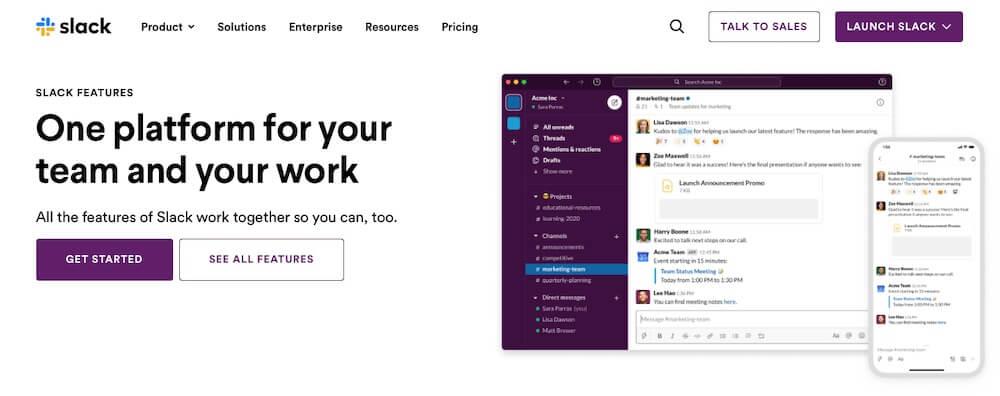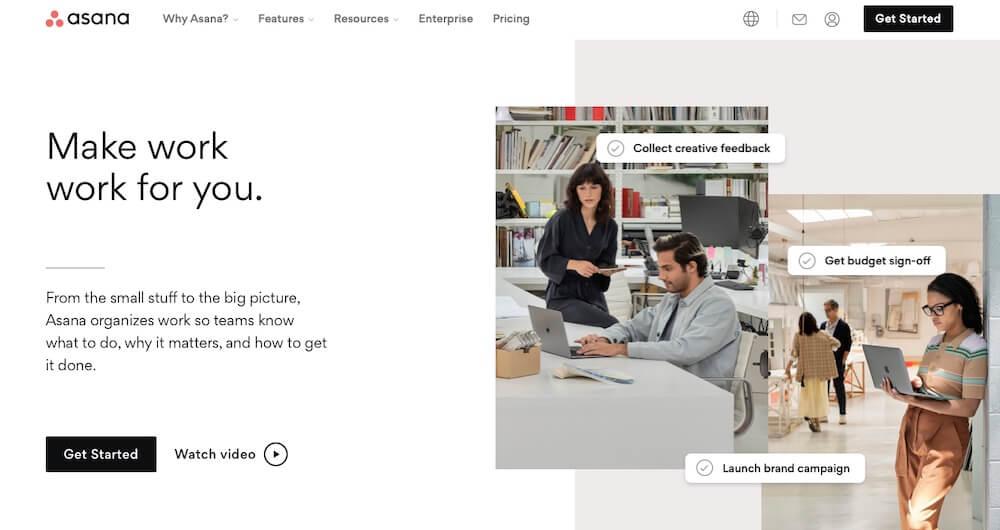Thinking about using a hybrid work-from-home model for your business? Here’s how to make the hybrid work model work – for everyone on your team.
Over the past few years, the hybrid work model rose to major prominence.
Don’t believe us? Just ask the 58 percent of American workers who have split their time working in-office and remotely as of 2022, according to a McKinsey study. But even more groundbreaking? When offered the option to work remotely at least some of the time, 87% of those asked take the offer.
The appeal is clear: Employees get the best of both worlds, enjoying the benefits that come with each work setting. With a hybrid model, employees can take advantage of serendipitous collaboration that can happen in person, while also benefiting from the flexibility and freedom that remote work provides.
But here’s the thing: Making a hybrid model work is no easy feat. In order to make sure your hybrid work model is successful, there are a few key things you need to keep in mind. First, however, let’s get some definitions and key features out of the way.
What is the Hybrid Work Model?
The hybrid work model is a mix of remote and in-office work. It’s the perfect compromise for employees who want some of the benefits that come with working in an office (such as serendipitous collaboration and a sense of community) while also enjoying the flexibility that comes with working remotely.
There are a few key features that make the hybrid model different from other types of work arrangements:
-
It’s not all-or-nothing. Unlike other models (like full-time remote or full-time in-office), the hybrid model offers employees a mix of both settings. This makes it much more flexible and customizable to each individual’s needs.
-
It’s not static. Unlike other models, the hybrid model can change over time to meet the needs of the employee or the company. This means that employees can start off working in the office full-time and then transition to working remotely full-time if their needs change (or vice versa).
-
It offers employees the best of both worlds. With a hybrid model, employees can take advantage of the sort of collaboration that can happen in person, while also benefiting from the flexibility and freedom that remote work provides.
Hybrid work is also typically presented via one of two routes: flexible or fixed.
Flexible hybrid work is exactly what it sounds like: Employees have the flexibility to choose when and where they work, as long as they are meeting their goals and responsibilities. This type of hybrid work is becoming increasingly popular, as it gives employees a sense of control over their work-life balance. In fact, according to a 2021 Accenture report, 63% of high-revenue growth companies use a flexible hybrid model.

Source:
Accenture
Fixed hybrid work, on the other hand, is a bit more structured. With this type of hybrid work, employees have set days when they are expected to be in the office and set days when they are expected to work remotely. This type of hybrid work is best for companies that need their employees to be in the office for specific reasons (like client meetings or team projects) but still want to offer them the flexibility to work remotely on other days.
With these definitions and clarifications out of the way, let’s now turn our attention to the reasons why you might consider implementing hybrid work for your business — and why you might wish to pass on it, too.
Pros and Cons of the Hybrid Work Model
There are a few key advantages and disadvantages that come with implementing a hybrid work model. Let’s take a look at each in turn:
Advantages of the Hybrid Work Model
There are several advantages that come with implementing a hybrid work model, including:
-
Increased flexibility and control for employees: Perhaps the biggest advantage of the hybrid model is that it gives employees more control over their work-life balance. With a hybrid model, employees can choose when and where they want to work, which gives them a greater sense of control over their time. This increased control can lead to higher levels of satisfaction and engagement from employees.
-
Improved communication and collaboration: Another big advantage of the hybrid model is that it can improve communication and collaboration. When employees are in the same physical space, they can have impromptu meetings and conversations that can lead to new ideas and solutions. And when employees are working remotely, they can use video conferencing and other tools to stay connected and collaborate effectively.
-
Greater access to talent: A hybrid work model also gives businesses greater access to talent, since they’re not limited to hiring employees who live near their office. This is especially beneficial for businesses that are located in rural areas or small towns, where the pool of available talent is often smaller.
Disadvantages of the Hybrid Work Model
There are a few potential disadvantages of the hybrid work model as well, including:
-
Potential for decreased productivity: One of the biggest potential disadvantages of the hybrid model is that it could lead to decreased productivity from employees. This is because employees might be working in environments that are not conducive to concentration and focus (like a noisy coffee shop), or they might be distracted by personal errands and household tasks.
-
Lack of clear boundaries: Another potential disadvantage of the hybrid work model is that it can create a lack of clear boundaries between work and personal time. This is because employees might feel like they need to be available at all hours of the day, which can lead to burnout.
-
Increased costs for businesses: The hybrid work model can also lead to increased costs for businesses, since they might need to invest in new technology and office space to accommodate employees who are working remotely.
Now that we’ve explored the pros and cons of the hybrid work model, let’s take a look at how you can make it work for your business.
3 Tips for Making the Hybrid Work Model Work for Your Business
If you’re considering implementing a hybrid work model for your business, there are a few things you can do to set yourself up for success, including:
1. Define What “Working” Looks Like
One of the first things you need to do when implementing a hybrid work model is to define what “working” looks like for your business. This means setting clear expectations for employees in terms of hours worked, communication, and productivity.
2. Invest in the Right Technology
Another important thing to do when implementing a hybrid work model is to invest in the right technology. This includes things like video conferencing and project management software, which will help employees stay connected and productive.
3. Create a Flexible Working Environment
Finally, you need to create a flexible working environment that accommodates both remote and on-site employees. This means having dedicated office space for employees who need it, as well as quiet places for employees who want to work remotely.
Tools for Making a Hybrid Work Model More Efficiently
Implementing a hybrid work model can be a great way to give your employees more flexibility and control over how they complete their work. However, it’s important to make sure you do it in a way that sets you up for success. One way to accomplish this is through the use of robust tools that offer the flexibility and organizational features required for streamlining workflows and communications.
Communication Tools

In order to make a hybrid work model work, it’s important to have strong communication tools in place. This includes things like video conferencing and instant messaging software, which will help employees stay connected whether they’re in the office or out of the office. A few examples of tools you might want to use include:
-
Slack: Slack is a popular instant messaging software that can be used for both one-on-one and group communications. It’s available on both desktop and mobile, making it easy for employees to stay connected no matter where they are.
-
Google Chat: Whether you’re wanting to communicate with those inside or outside of your company, Google Chat is a viable video conferencing software option. Download it onto whatever device you have–desktop or mobile–and easily join meetings from anywhere.
-
Zoom: Zoom is another popular video conferencing software that can be used for both internal and external communications. It offers features like screen sharing and recording, making it easy to collaborate on projects and share information.
Project Management Tools

Project management tools are another important piece of the puzzle when it comes to making a hybrid work model work. These tools will help you keep track of deadlines, assigned tasks, and progress reports. They can also be used to collaborate on projects with employees who are working remotely. Tools to check out include:
-
Asana: Asana is a helpful project management software that enables users to manage tasks, collaborate with teams, and track progress. Its accessibility on both desktop and mobile devices allows employees to be productive even when they’re not in the office.
-
Basecamp: Basecamp is a project management software that makes it easy for employees to stay on top of assigned tasks with its mobile and desktop availability, to-do lists, file sharing, and team chat features.
-
Trello: No matter where your employees are, Trello allows them to stay on top of their assigned tasks via desktop or mobile. In addition, Trello offers progress tracking and team collaboration features to streamline project management.
Collaboration Tools
Collaboration tools are essential for making a hybrid work model work. These tools allow employees to work together on projects, even if they’re not in the same location. Some examples of collaboration tools include:
-
Adobe Creative Cloud: Adobe Creative Cloud is a set of tools that allows features like file sharing, real-time editing, and team collaboration. Employees can use it on desktop or mobile devices, so they can always be connected and contributing to projects.
File Sharing Tools

File sharing tools are also important for making a hybrid work model work. These tools allow employees to share files and documents with each other, regardless of location. Some examples of file sharing tools include:
-
Dropbox: Using Dropbox, you can easily stay connected with your team and work on projects from anywhere. This file sharing tool offers features like real-time syncing, version control, and team collaboration that make it easy to stay organized and productive no matter where you are.
-
Google Drive: Another popular file sharing service is Google Drive, which has features like real-time sync, version control, and team collaboration. It’s available on both desktop and mobile platforms, making it simple for employees to stay in touch with each other and work on projects anywhere they go.
-
One Drive: One Drive is a file sharing tool that allows for features like real-time syncing, version control, and team collaboration. It’s available on desktop and mobile platforms, so employees can use it to stay connected and work together on projects from anywhere.
Virtual Office Tools

Virtual office tools are another important piece of the puzzle when it comes to making a hybrid work model work. These tools allow employees to access files and applications from any location. Some examples of virtual office tools include:
-
GoToMyPC: GoToMyPC is a versatile tool for employees who telecommute or otherwise work remotely. With features like remote access, file sharing, and team collaboration, it’s easy to stay connected and productive no matter where you are. What’s more, GoToMyPC is available on both desktop and mobile devices, so you can always be reachable when you need to be.
-
LogMeIn: LogMeIn is a popular virtual office tool that offers features like remote access, file sharing, and team collaboration. This tool is available on both desktop and mobile devices, which allows employees to easily stay connected with each other and work on projects from anywhere.
-
TeamViewer: TeamViewer is the perfect tool for businesses with employees who telecommute or travel often. It allows users to remotely access files and applications, as well as stay connected with team members through instant messaging and video conferencing features.
Make the Hybrid Work Model Work For You
Making a hybrid work model work can be a challenge, but it’s not impossible. By defining what “working” looks like for your company and using the right tools, you can make a hybrid work model work for you.
 Source: Accenture
Source: Accenture



